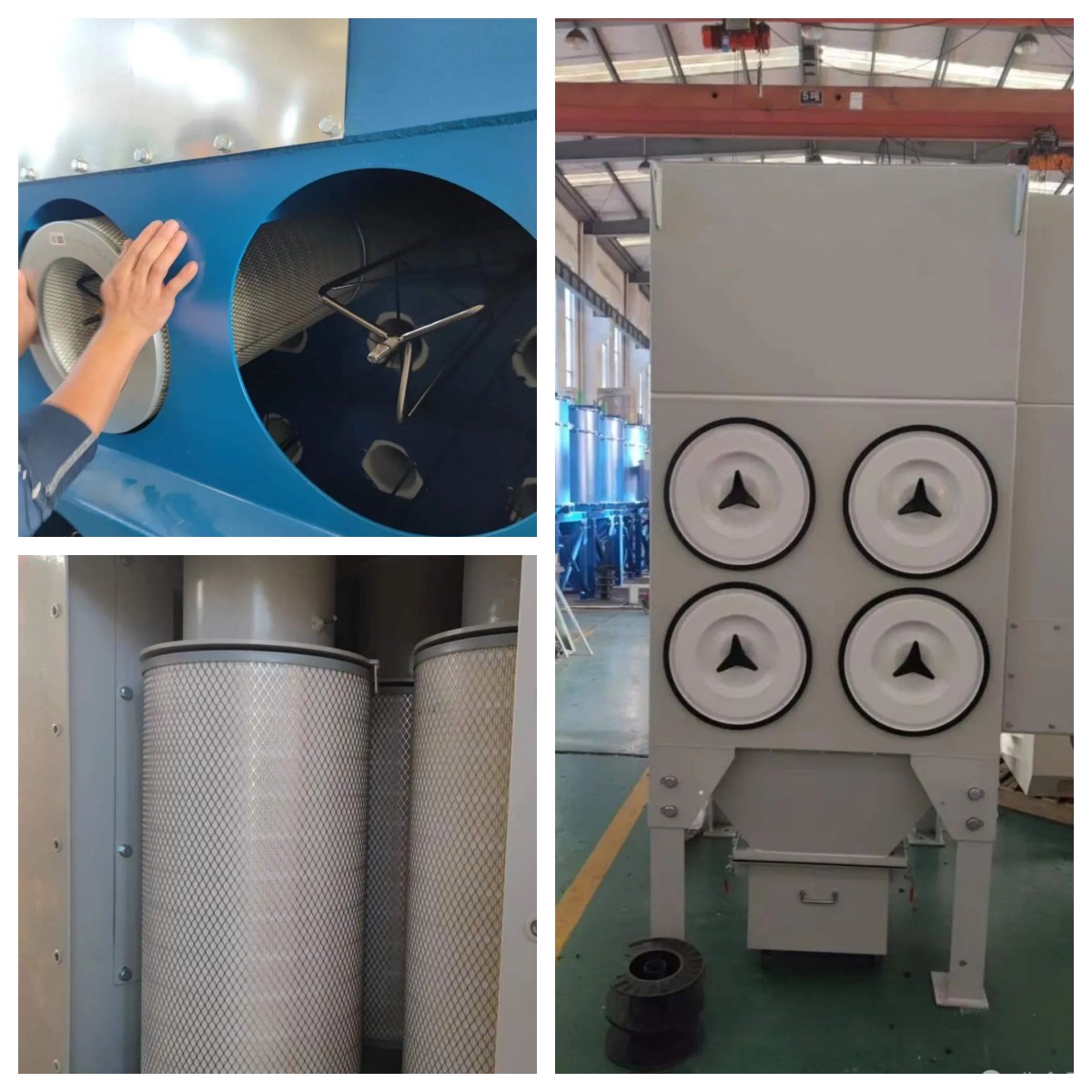The Importance of Filter Cartridges in Industrial Dust Collectors
Date: 2025-02-23 Categories: Industry information Views: 187
Filter cartridges are essential components of industrial dust collectors, directly impacting performance, efficiency, resistance, power consumption, maintenance costs, and overall economic factors. These cartridges play a critical role in the effective operation and longevity of dust collection systems, making it crucial to select the right type and properly maintain them.
Construction and Materials
Filter cartridges typically consist of four main components:
- Top Cover
- Metal Frame
- Pleated Filter Media
- Base
The filter media is carefully folded and bonded into a cylindrical shape, providing a large surface area for dust capture. It is supported internally by a metal mesh framework, which ensures structural stability. The top and bottom of the cartridge are sealed with covers and bases, which help secure the filter and ensure that dust is trapped efficiently. The top cover also includes fixed bolts and gaskets to guarantee a tight seal.
Types of Filter Cartridges
Filter cartridges are classified based on their filter materials. The most common types include:
- Polyester Cartridges – Known for their thickness, durability, and relatively lower precision. These cartridges are ideal for less demanding applications.
- Composite Fiber Cartridges – Offer superior precision and are more versatile, suitable for applications requiring higher filtration efficiency.
- Post-Treatment Cartridges – These include various types of filters designed for specific challenges, such as:
- Membrane Filters (for finer filtration)
- Antistatic Filters (for controlling static buildup)
- Oil and Water-Resistant Filters (for environments with moisture or oils)
- Flame-Retardant Filters (for high-risk environments with flammable materials)
Orientation and Installation
The orientation of filter cartridges plays an important role in dust collection efficiency and ease of maintenance. Filter cartridges can be installed in three main orientations:
- Vertical Installation – This orientation allows dust to settle more efficiently during pulse cleaning, reducing the risk of secondary dust dispersion.
- Diagonal Installation – Offers a compact structure, which can be beneficial in limited space environments, and allows for easier cartridge replacement.
- Horizontal Installation – Primarily used for gravity settling, it minimizes the risk of secondary dust release. However, this installation may present challenges in dust removal from the lower cartridges.
Maintenance and Lifespan
Proper maintenance is essential to maximize the performance and lifespan of filter cartridges. A few key indicators help determine when to replace or clean the cartridges:
- Visible dust overflow from the exhaust.
- Significant dust accumulation on the surface of the filter cartridge.
To prolong the life of the filter cartridges, regular offline cleaning and timely removal of accumulated dust are essential, depending on the operational conditions. Routine inspections help identify potential issues early and ensure that the cartridges are functioning optimally.
The typical lifespan of filter cartridges ranges from 3,000 to 4,000 hours. However, the frequency of cartridge replacement will depend on the severity of dust accumulation in the application, ranging from monthly to yearly replacements.

Conclusion
Understanding the construction, materials, installation, and maintenance of filter cartridges is vital for optimizing the performance and longevity of industrial dust collectors. By selecting the right cartridges for your application and implementing a consistent maintenance strategy, you can significantly enhance filtration efficiency, reduce operational costs, and extend equipment lifespan.















